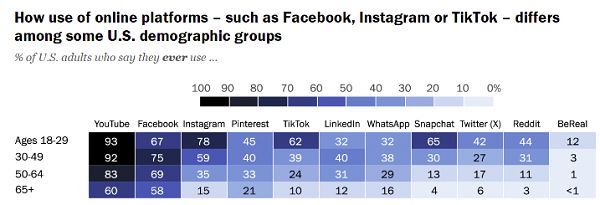Snapchat has launched a new promotional campaign, in which it seeks to present its platform as the anti-social media, in order to distance itself from the many issues being experienced within other apps, while also leaning into evolving online engagement trends.
https://www.youtube.com/watch?v=5Bqqhr_2avc
As you can see in this clip, Snapchat’s seeking to present its platform as an antidote to the divisive popularity contest that social media has become, in order to enhance its appeal to more users.
As explained by Snap:
“The promise of social media started out great. It was a place where we could connect with people and share bits of our lives. A place where we could be a part of something bigger than ourselves – where we could feel supported and loved. But somewhere in the adolescence of social media, things began to feel off. Friends became people who felt more like strangers. Moments became more curated. Sharing became more contrived.”
Snapchat, it says, is different, because it doesn’t have a feed, and it isn’t seeking to showcase your posts to as many people as possible. Snapchat opens to the camera, and deletes your content by default. That, it suggests, enables users to feel more free to post about more aspects of their lives.
“People feel exhausted by the social media popularity contest. Fed up with having to look pretty or perfect in every post. Tired of competing for likes and comments. Misled by misinformation. But Snapchat is not social media. It never was. In fact, it was built as an antidote to social media”
It’s actually a pretty appealing pitch, though how Snapchat matches this with its origins as a space for more risqué, controversial content is another consideration.
It is also worth noting that Snap has been pushing this alternative angle for years, working to distance itself from the “social media” tag as it seeks to differentiate its offering.
Back in 2017, when Snap first launched its Spectacles camera glasses, it also tried to re-brand itself as “a camera company”, with a focus on developing new ways to innovate the capture of experiences, as opposed to being a social engagement platform.
Snap CEO Evan Spiegel has, at different times, reiterated that camera focus, while also labeling Snapchat as a messaging service, in variance to other social apps. Indeed, earlier this month, in a leaked memo sent to employees, Spiegel said that “social media is dead”, with Snapchat set to take up the cause and provide improved personal connection, in variance to angst-inducing social apps.
And in some ways, he is correct.
Social media platforms have been increasingly leaning into video, and AI-based content recommendations of video content, following the lead of TikTok, which has seen great success by highlighting the most relevant video clips to each user, as opposed to enclosing their experience to only the people and profiles that they’ve chosen to follow.
In this sense, social media usage is now less about seeing what your friends and family are up to, and more about what’s trending. Which would make them more entertainment-based apps, as opposed to connective tools.
The social elements have increasingly shifted towards more enclosed, private group discussions, primarily within messaging apps. And as that trend evolves, it does feel like the social aspect is shrinking. And when you also consider that the vast majority of social media users never post in any app, and just consume content, there is growing evidence to support Spiegel’s contention.
So is Snapchat the antidote, the alternative that more users are seeking, as a means to stay connected and engage with more enclosed groups of friends?
For many young users, it definitely is, which is reinforced in every study that analyzes demographic usage trends. The below, for example, is from the Pew Research social media usage trend report, which was published earlier this week.

The problem for Snap is that, as you can see in these stats, that usage is not holding up as its audience gets older, though Snap is also only 12 years old, and it could still have more staying power within expanded demographic subsets in the coming years.
But right now, Snap isn’t maintaining its relevance as its audience ages up. It’s been trying to address this for years, in various ways. But the evidence suggests that Snap might just be a cool teen app, which becomes less relevant to adults who connect in alternative forms.
So while it may be a good alternative to social media as it suggests, that’s not a message that’s resonating with an expanded cohort of users.
Can Snap change that? Will this reiteration of its focus appeal to more users, many of whom are already switching to messaging apps?
It’s a good pitch, and I do think it will resonate with Snap’s core audience. I’m just not sure it’s hit for anybody else.



